I have learned how to produce the absolute best feed blends for my poultry in our frigid winters. Here’s what I do.
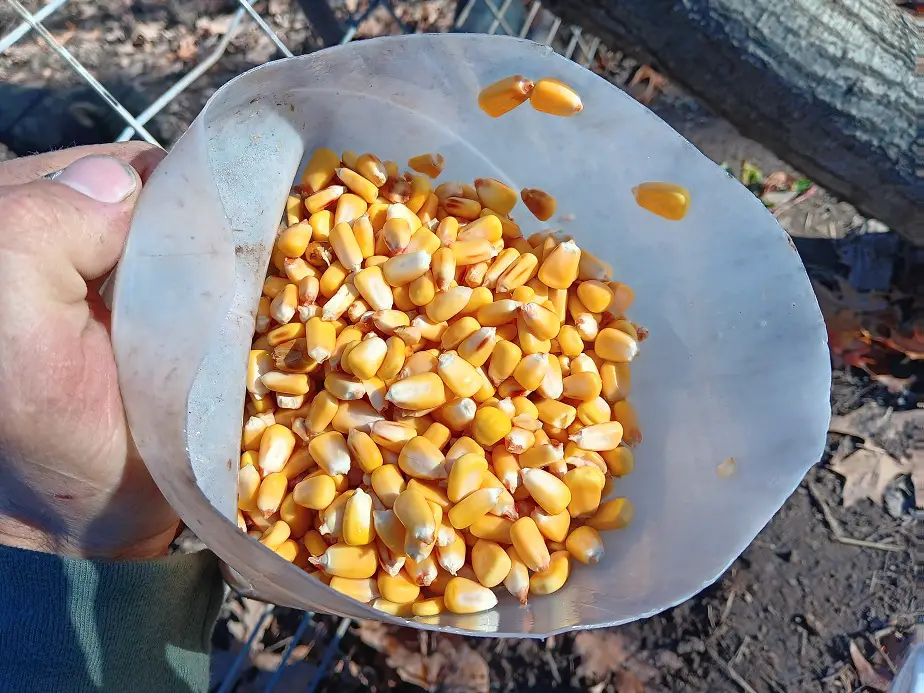
Fermented Whole Grains
Fermented whole grains provide a whole-body boost to poultry in the winter months. It helps to improve gut health when there’s no available pasture, and it helps to prevent a coccidiosis outbreak while they are more confined to the coop’s wet conditions.
Fermented whole grains can be any type of cracked, uncracked, or rolled grain. The less processed, the better its fermentation improvements will be. The fermented grain is full of valuable beneficial gut microbes like Lactobacillus.
The increase of beneficial gut microbes improves the gut biome, which allows the body to better absorb and utilize nutrients in feed. It also helps to rid the gut of pathogenic microbes and gut parasites.
Even more than that, it allows the body to better regulate hormonal responses that control things like metabolic rate and body temperature.
Another function we see advanced as a result of feeding some fermented grains is an improved immune system. One of the worst issues of winter chicken coops is pneumonia, a respiratory infection. A stronger functioning immune system is perhaps the largest and most adequate factor in keeping that at bay.
The increase of beneficial gut microbes also increases the in-gut production of short-chain fatty acids, which adds more overall energy to the diet of poultry. So, please do ferment some whole grains from time to time.
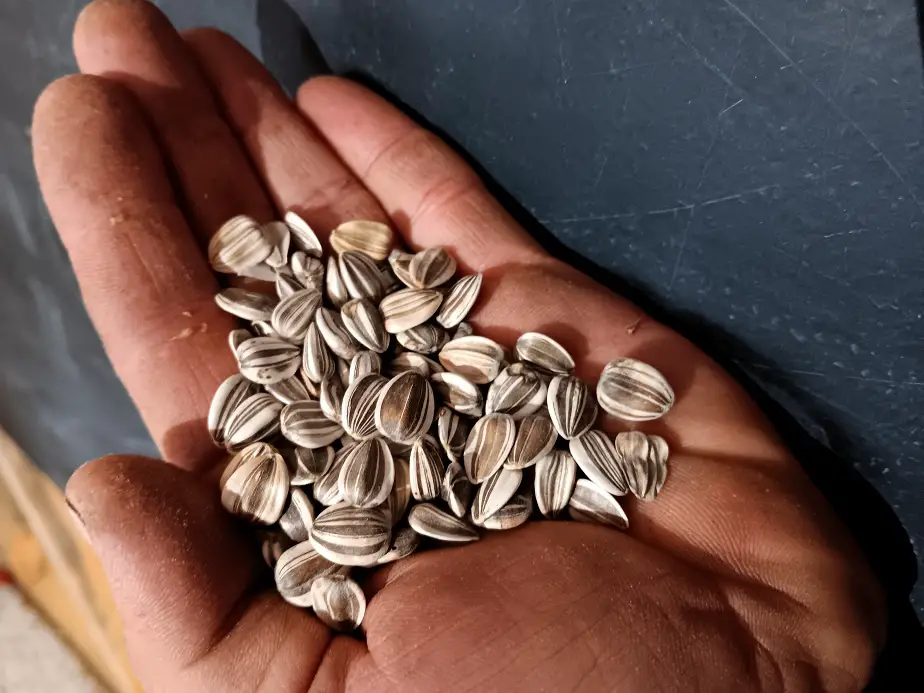
You can lead about fermenting chicken feed in this article: Fermenting Chicken Feed (full guide)
Sunflower Seed
Sunflower seeds contain up to 41 percent oil and can add valuable energy to chicken feed without diluting the protein content of the overall diet. adding 3-5 pounds of sunflower seeds per 50 pounds of feed will increase both the potential energy and the metabolic potential in a poultry diet.
Common sunflower seed from either Black Oil Sunflower or from the culinary Russian Mammoth varieties both have about 30 percent more energy than yellow feed corn. It’s all in the impressively high content of healthy oils. Sunflower oil is quite high in both Vitamin E and in omega-6 fatty acids.
The Omega fatty acid group is considered a powerful antioxidant supplement. Antioxidants quite literally reduce the physical stress in animals. The freezing temperatures of winter often induce clinical cold-stress on poultry. I can literally see stress in the muscle and organ tissues during a research biopsy.
Adding antioxidants to a poultry diet is the simplest and perhaps best way to prevent this kind of stress. I have honestly seen a difference in birds fed this type of diet vs a conventional poultry diet.
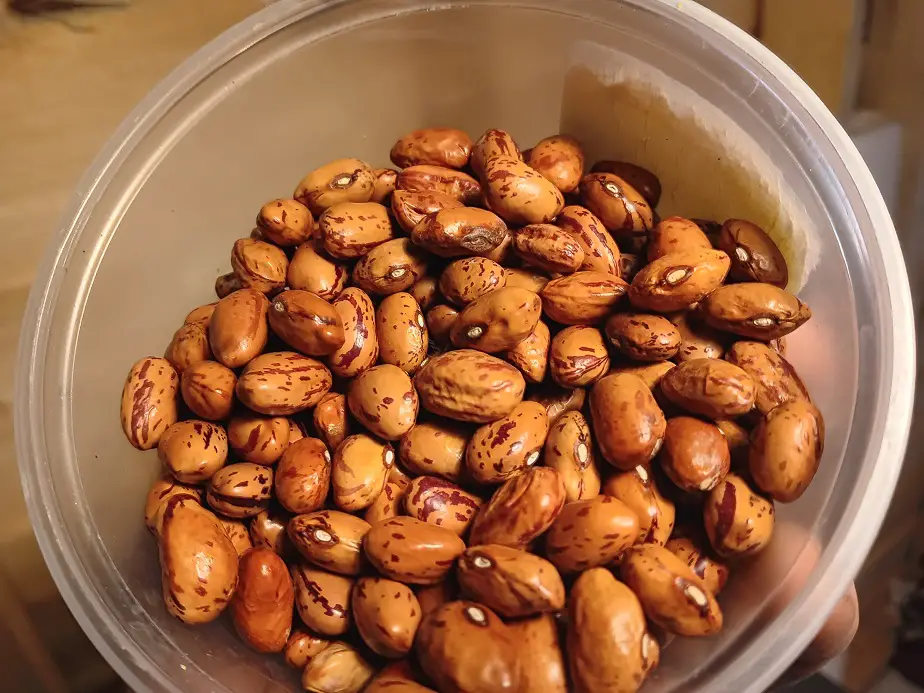
Common Bean
Common Bean boosts winter chicken feed by adding additional protein and antioxidants, as well as the potential for phytonutrients like anthocyanins. Examples of common bean are pinto beans, black beans, and kidney beans. More red-colored beans are considered more beneficial.
I’m of the opinion that these should be included in more livestock feed. I’ve almost never seen them in any feed blend commercially available. The protein content of these beans is somewhere between 20 and 30 percent, so they do add quite a bit of extra protein to a winter poultry feed.
Extra protein is great because there is usually some molting going on in a flock through the winter. Molting and growing new feathers tend to require more protein than laying eggs, so additional protein is a smart idea for winter feed.
There is not much oil in beans, and the overall energy is equal to or slightly more than your standard chicken feed. It won’t add much energy, but it will increase the protein during the most needed time of year. Dark red kidney beans and the old heirloom cranberry beans are considered the best based on their nutritional profiles being higher in antioxidants.
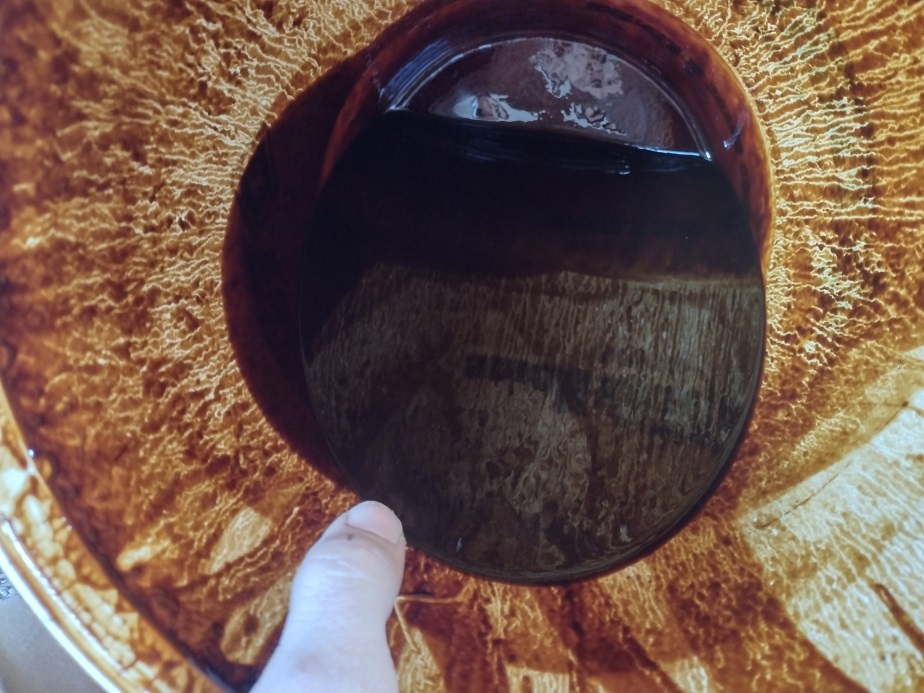
Molasses
Molasses is a great winter feed additive for chickens. It adds energy and feed density without increasing the volume of feed. That means chickens will get more calories per day without eating more feed. Up to 30 percent higher caloric value may be beneficial in winter, so molasses is very useful during winter.
There are two main types of molasses; cane molasses and beet molasses. Most of what you buy in the grocery store and from feed mills is cane molasses. It’s about 45 percent sugar and little else. Beet molasses (from sugar beet) has some additional minerals and protein.
The great thing about it is that I can pour a gallon of molasses into 5 gallons of feed and still only have 5 gallons. Molasses seeps in and fills the gaps between feed particles, coating them thoroughly. Now, the sugar in molasses has about the same caloric value of chicken feed.
Considering it’s about 50 percent water, adding 1 gallon of molasses to 5 gallons of feed increases the caloric value by about 10 percent. That’s a significant increase. Also, the sugar is able to be absorbed and metabolized before starch and protein, allowing it to go right into body-heat production on a cold day.
Alfalfa Meal
Alfalfa Meal is a valuable winter feed ingredient for poultry. It adds Chlorophyll, antioxidants, and a more bio-available set of minerals to chicken feed. Adding just 1 percent alfalfa meal to a winter feed is shown to increase healthy body function and decrease cold stress among fowl.
Alfalfa has quite a few functions of improving gut health. Probably the two largest factors are the chlorophyll and flavonoid compounds. Chlorophyll is a very complex chemical that is incredibly rich in antioxidants and has a direct correlation with improved immune system capabilities.
Alfalfa also contains the complete set of minerals that chickens need to regrow feathers in the winter months. Feeding a little alfalfa in the winter is also shown to improve egg production, egg nutrition, and shell quality during the upcoming laying season.
It’s generally fed at an inclusion rate of between 1 and 5 percent, depending on how many other high-fiber materials you are including.
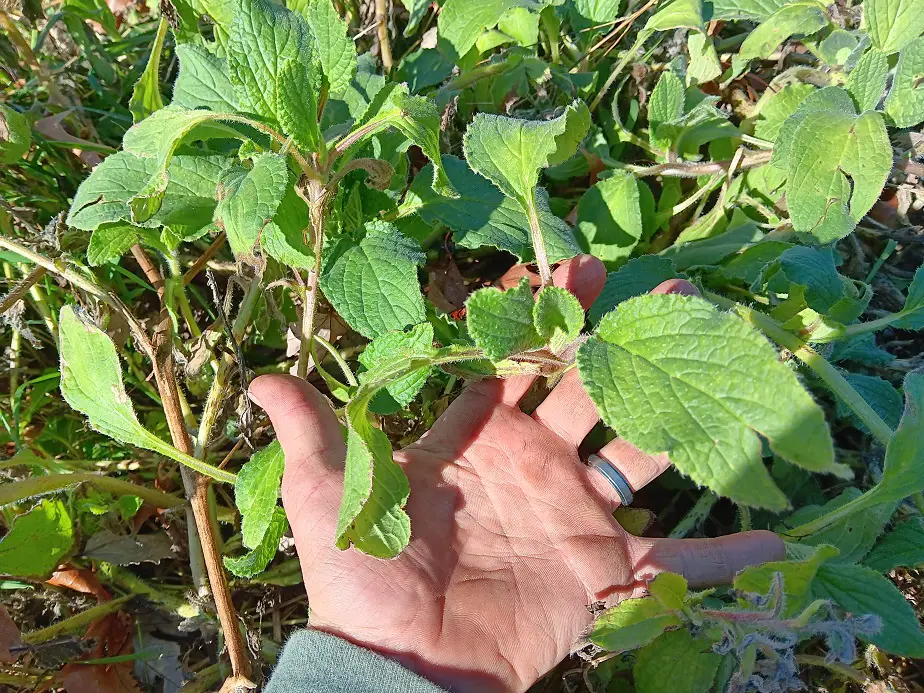
Comfrey
Comfrey is a winter feed supplement that helps with molting and feather regrowth, reduces cold stress, and protects the skin during low-feather periods. Comfrey will not impact the protein levels in feed, and it contains an assortment of antioxidants, trace minerals, and vitamins if stored properly.
Comfrey can be used at higher dietary inclusion rates than most green plants without negatively impacting egg laying or growth of chickens. Generally, 10 percent by dry weight is considered the limit. I would probably go with up to 5 percent if that was the only green I was adding.
I do like to stick with about 5 percent of the total diet being green plants. That’s a great spot between getting the benefits of the plants without impacting the overall energy or protein of the diet too much. Remember, in winter we usually want a little extra energy.
It would honestly be a fine idea to combine some of these greens with a little sunflower seed, some beans, and add molasses to the mix. That honestly sounds good to me. Just be sure to back off of the molasses and sunflower if your birds look like they are getting too fat.
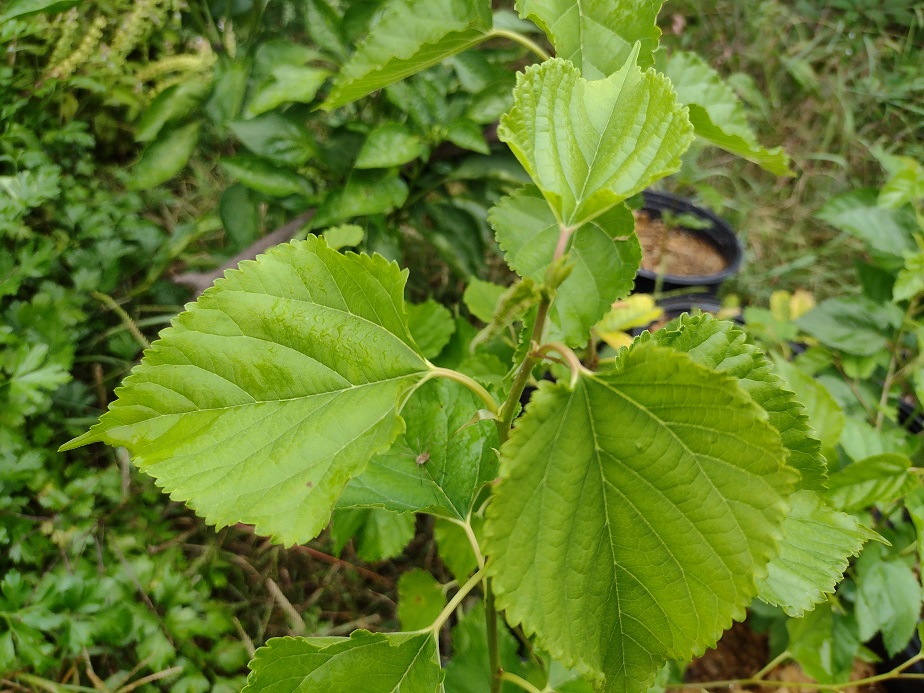
White Mulberry Leaf
White mulberry leaf is one of the most beneficial winter feed additives for chickens. In power form, it can be added to any feed and it will increase the protein, mineral content, and overall feed value of poultry diets. It can be added up to 5 percent for winter feed, and it will improve the birds’ visible condition.
White mulberry can vary in protein from 14 to 42 percent, depending on the seasonal growth stage of the leaf. In general, it’s about 24 percent protein during peak harvest time. It has been selectively bred in Asia for several thousand years to have increases protein and in digestability of the leaves.
This is, in my opinion, the most beneficial of all green leafy feed additives for chicken feed. Yes, it’s high in chlorophyll which means antioxidants. ait also has a much higher profile of amino acids than other leafy greens, and it has a content of both primary and trace minerals.
It’s one you can buy yourself, or maybe even grow your own. I’m planting a small orchard of these trees for production of feed supplements.
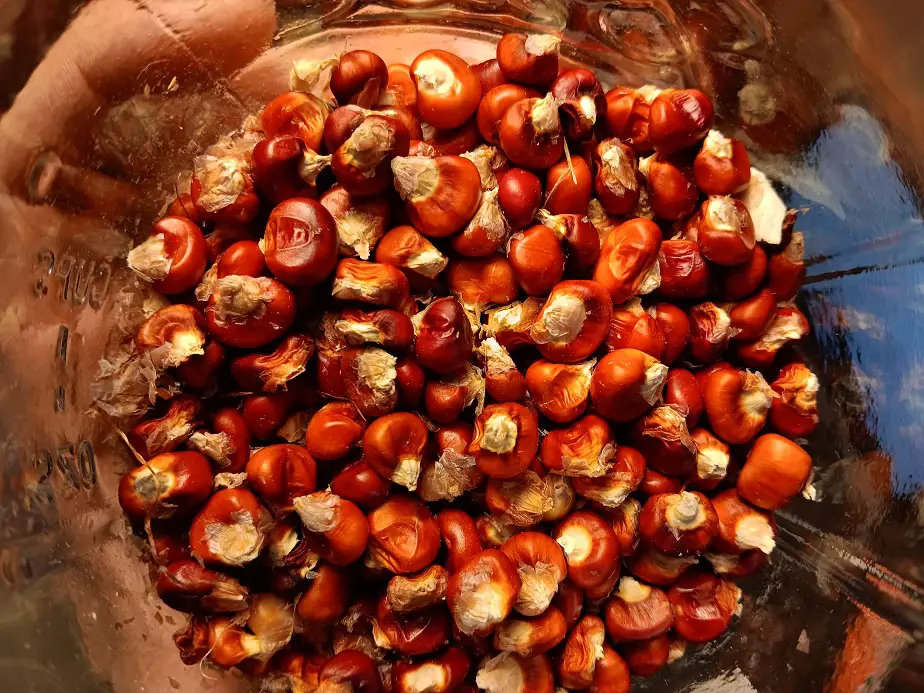
High-Pigment Grains
Grains high in beta-carotenes (yellow/orange pigments) and anthocyanins (red/purple pigments) are valuable as winter feed ingredients for chickens. Varieties like Bloody Butcher and Aztec Black are some of the best. They cause a reduction in winter stress and an overall increase in healthy body function.
I absolutely love the inclusion of some of these lesser common grains in our poultry feed mixes. Unfortunately, I don’t know of any other person or company manufacturing with them. In some of these dark grains, I can literally get ten times the antioxidants of regular feed corn. And, they’re higher protein.
I grow a variety of Wade’s Giant Indian that’s been selected for a deeper red color. It has about 30 percent more protein than yellow feed corn. I see that kind of result all across the board with these older and heirloom varieties of corn. They aren’t grown large scale because they aren’t as productive as the GMO hybrids of today. But, it’s a better feed corn.
Learn more about alternative chicken feed grains here: Best Grain for Chicken Feed (5 awesome options)

Beet Root Powder
Beet root is beneficial to lowering winter stress, improving immune function, and helping to regulate hormonal responses in chickens. It has perhaps the most functional set of antioxidants and it causes improvements in the levels of cholesterol in eggs and poultry meat.
We’re talking red garden beets, not sugar beet. There’s a big difference.
Adding just a little beet root to chicken feed improves gut function, and nutrient uptake, and helps fight against Salmonella and E. Coli. The strong antioxidants of beet root increase the strength and viability of a chicken’s organs, and cause an increased feed function rate.
It may even slightly reduce the amount of feed chickens need to eat because of how well it improves digestion and nutrient uptake in poultry. Beet root powder can be expensive, but realize that it takes 40 large beets, dehydrated and ground to make 1 pound of beet powder.
So now, you can take what you learned here and apply it to your own flock. You could use a blend of these or any one supplement to make a difference to your feathered friends. I hope I helped.
Related Articles:

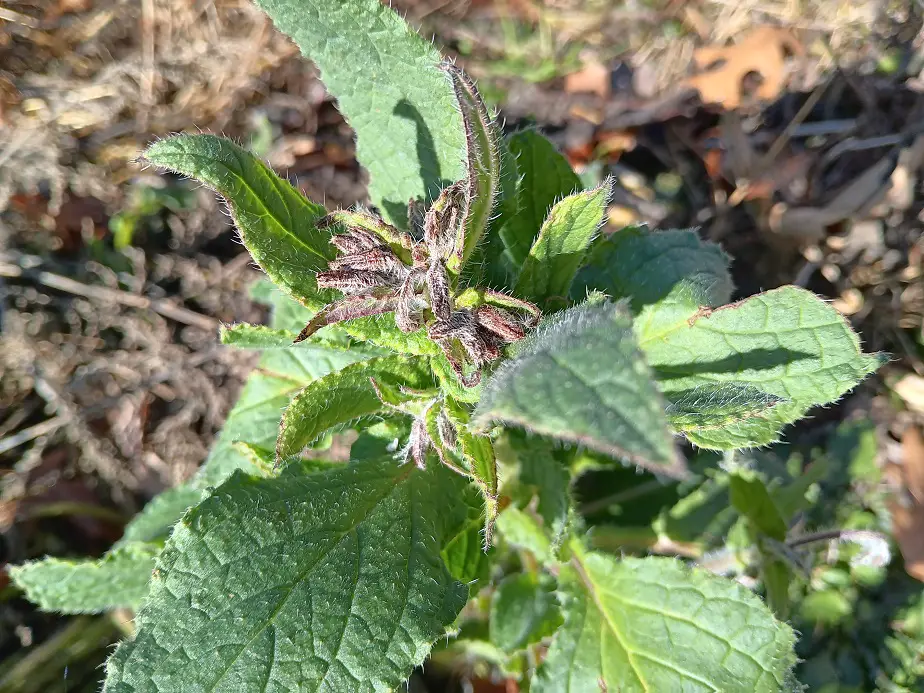
I realize this article focused on vegetation, but what are your thoughts on raising insects as another supplement to the feed? Something that can be grown year-round indoors, like mealworms, could be more than just an occasional treat but increased in production for some real nutritional benefits, especially during the cold winter months.
I’m a huge fan of bugs for chicken feed. I’ve not expiramented much exept with worms, and those were wild haevested. I layed a tarp on the ground for a week, then pulled it up to gather the worms for the chickens, and some fishing. I know a farm in Canada that collects restraunt waste and uses it to grow Soldier FLy larvea for their primary protein source. I may do some soldier flies next summer, but I’m not allowed to bring bugs in the house.